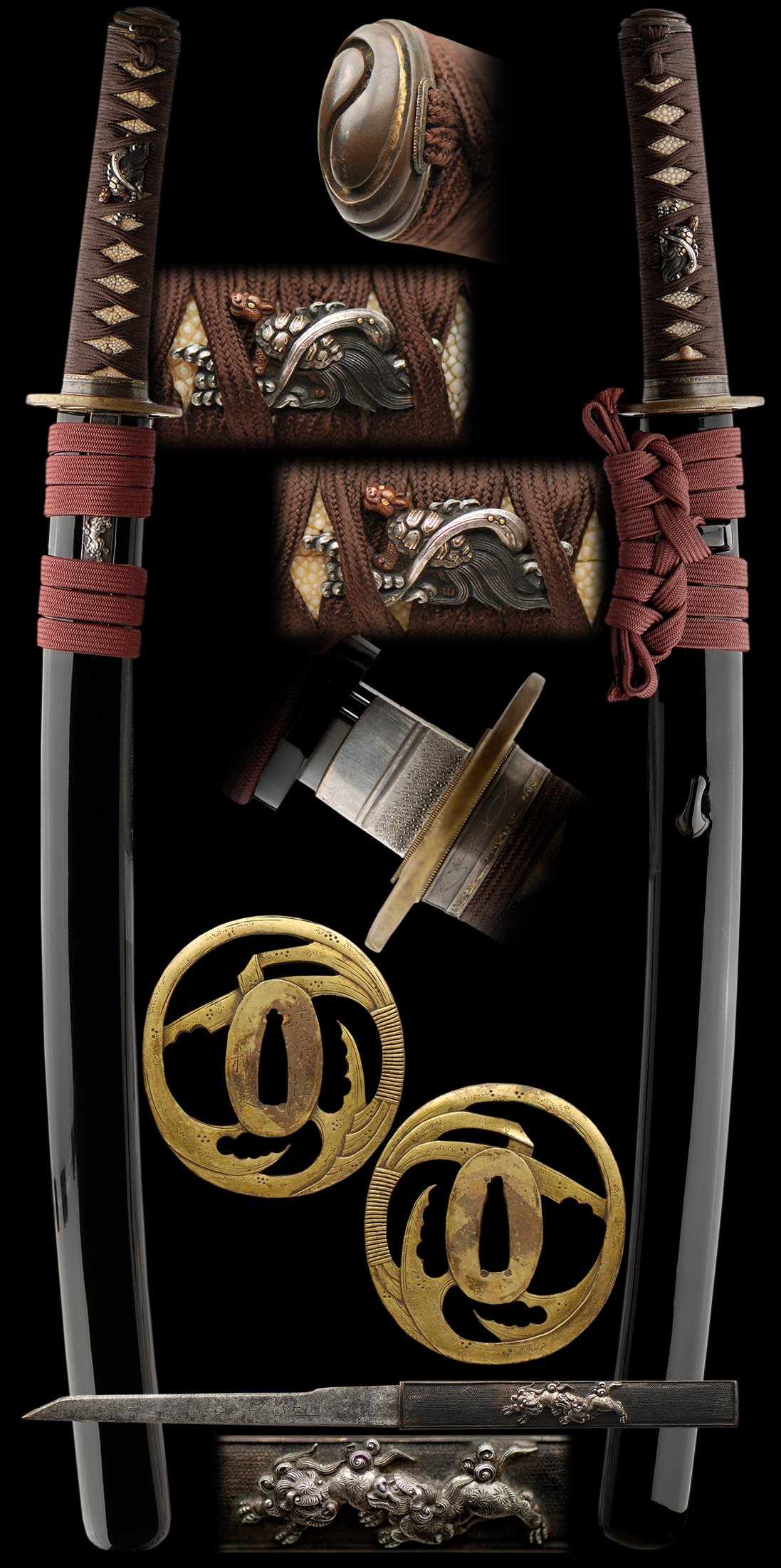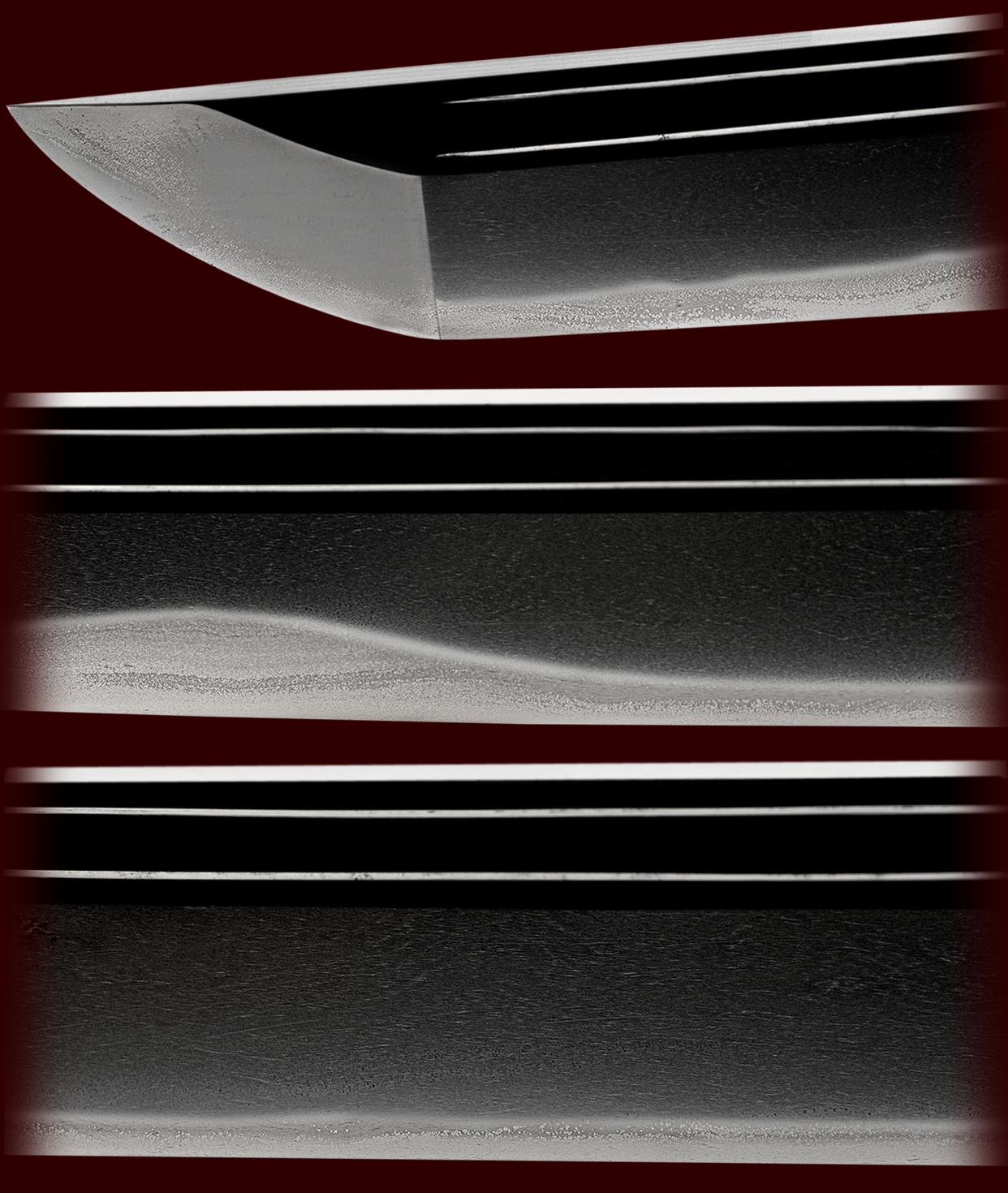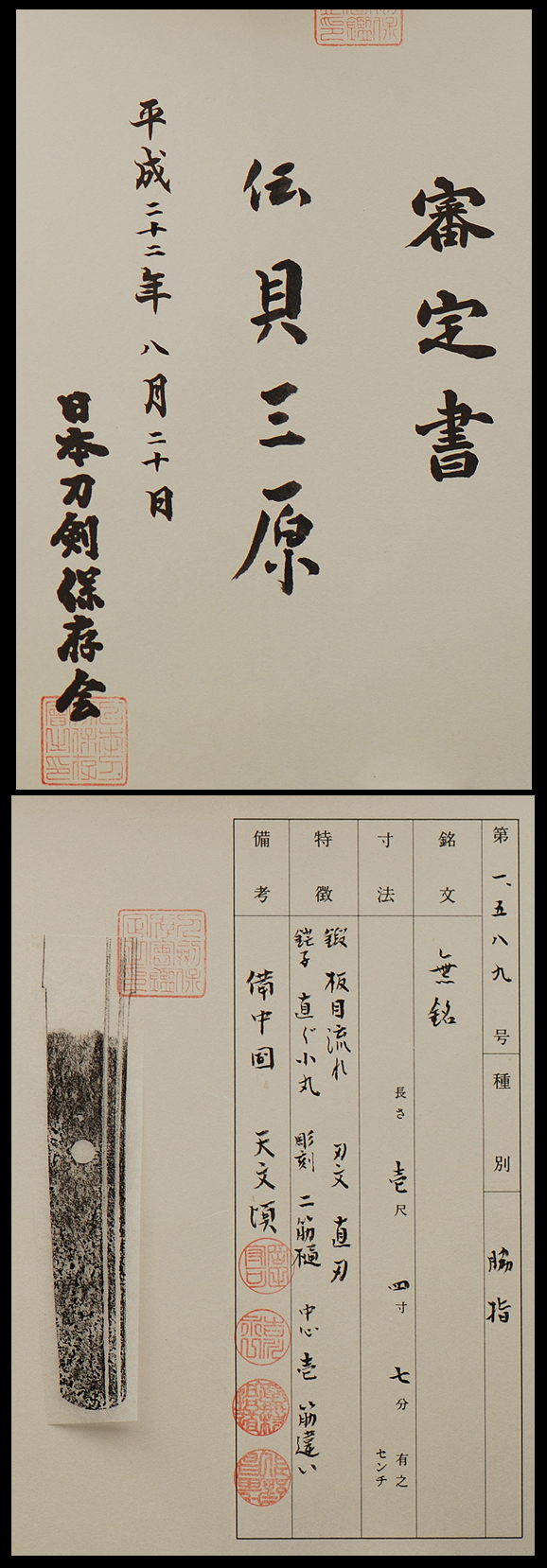A well made koto blade of the Mihara school. This blade is believed to be from the Tenmon era of thev 16thcentury. The hada is a beautiful Itame nagare with mokume and much ji-nie. Utsuri appears on the ji. The hamon is a rich wavy Sugu-ha with much hataraki for your viewing pleasure. The undulating hamon is sprinkled with nie the entire length of the blade and there are mountainous wisps of sunagashi throughout. The boshi is ko-maru. The Mihara School started in Bingo Province around the Shochu era (1324 – 1326), according to Yamanaka, “Descendants of the late Mihara School and of the Goami School made a few blades.” Bingo is on the Sanyodo Highway, on the south side of the western portion of Honshu, the main island of Japan. It faces the inland sea, beside Bitchu province.
This sword comes with mounts, papers and in shirasaya.
Mihara school had been prospered from late Kamakura to late Muromachi period in Bingo province present Okayama prefecture. The representative swordsmiths were Masaie and Masahiro. Especially the works of last Kamakura period to Namboku-cho period are called Ko-Mihara, and are distinguished from the later period.
Rising above the times, the school had been influenced by the Yamato School. There had been many shoen; manors in medieval Japan in Bingo province ruled by the shrines and temples of Yamato province. As the features of Mihara school, elegant suguha-hamon with slight midare-ba and smooth Itame-hada.
The sword comes mounted in beautiful koshirae with stylized fuchi/kashira . The menuki are turtles and very nice quality. Meanings derived from a turtle/tortoise motif are complex in Japanese culture. Hinduism, Taoism, Confucism, and Buddhism all contribute understanding. These traditions claim that the tortoise helps prop up the world, guards the northern quadrant of the universe with the snake, and carries on its carapace sacred inscriptions. The animal is believed to live to an exceptional age. According to Japanese folklore the tortoise then develops a flowing white tail and exhales special vapours that conjure up sacred jewels.
Primarily the tortoise is a symbol of longevity.
- Mei: Mumei
- Date: Tenmon 1532-1555
- Nagasa: 17-1/2 inches
- Sori: 7.5 mm
- Width at the ha-machi: 24.6 mm
- Width at the yokote: 17.5 mm
- Thickness at the mune-machi: 5.4 mm
- Construction: Shinogi zukuri
- Mune: Iori
- Nakago: Ubu
- Kitae: Itame/nagare
- Hamon: suguba
- Boshi: Ko-maru
- Condition: Good polish
(shipping and insurance included)
Email us if your interested in this item and remember to include the order number for this item: fss-924.
Click to Enlarge Image
Click to Enlarge Image
KANTEISHO
DEN KAI MIHARA
SÔSHIN
August 20, 2010
NTHK
No. 1, 589
Mei inscription: Mumei
Length: 1 shaku 4 sun 7 bu
Kitae: Itame nagare
Hamon: Suguba
Bôshi: Suguba ko-maru
Horimono: Hutasuji hi
Nakago: Bitchû no Kuni, One mekugi ana, yasurime sujikai
Remarks: Around Tenmon (1532-1555)
For Sale

























